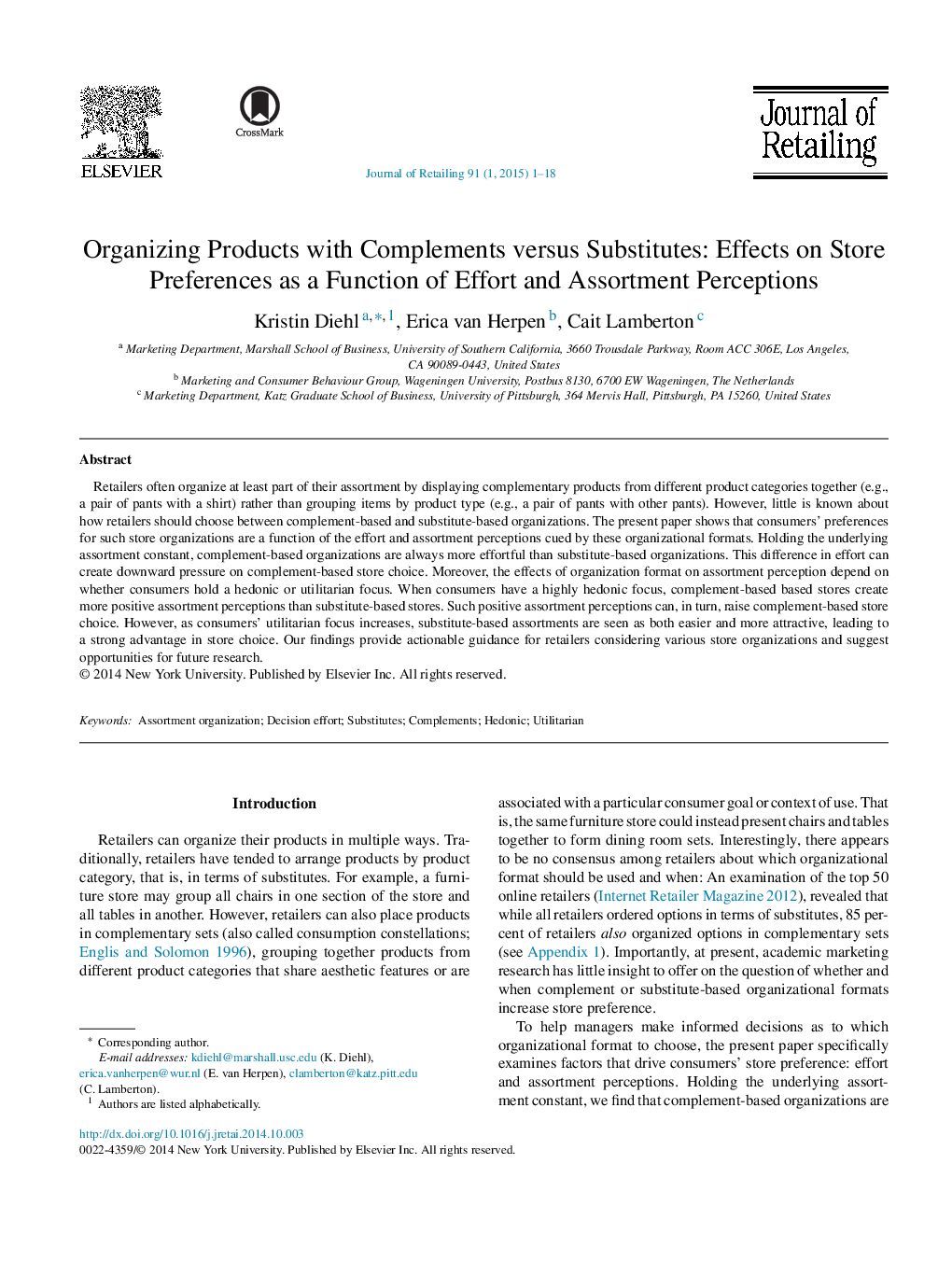| Article ID | Journal | Published Year | Pages | File Type |
|---|---|---|---|---|
| 886282 | Journal of Retailing | 2015 | 18 Pages |
Retailers often organize at least part of their assortment by displaying complementary products from different product categories together (e.g., a pair of pants with a shirt) rather than grouping items by product type (e.g., a pair of pants with other pants). However, little is known about how retailers should choose between complement-based and substitute-based organizations. The present paper shows that consumers’ preferences for such store organizations are a function of the effort and assortment perceptions cued by these organizational formats. Holding the underlying assortment constant, complement-based organizations are always more effortful than substitute-based organizations. This difference in effort can create downward pressure on complement-based store choice. Moreover, the effects of organization format on assortment perception depend on whether consumers hold a hedonic or utilitarian focus. When consumers have a highly hedonic focus, complement-based based stores create more positive assortment perceptions than substitute-based stores. Such positive assortment perceptions can, in turn, raise complement-based store choice. However, as consumers’ utilitarian focus increases, substitute-based assortments are seen as both easier and more attractive, leading to a strong advantage in store choice. Our findings provide actionable guidance for retailers considering various store organizations and suggest opportunities for future research.
Graphical abstractFigure optionsDownload full-size imageDownload as PowerPoint slide
